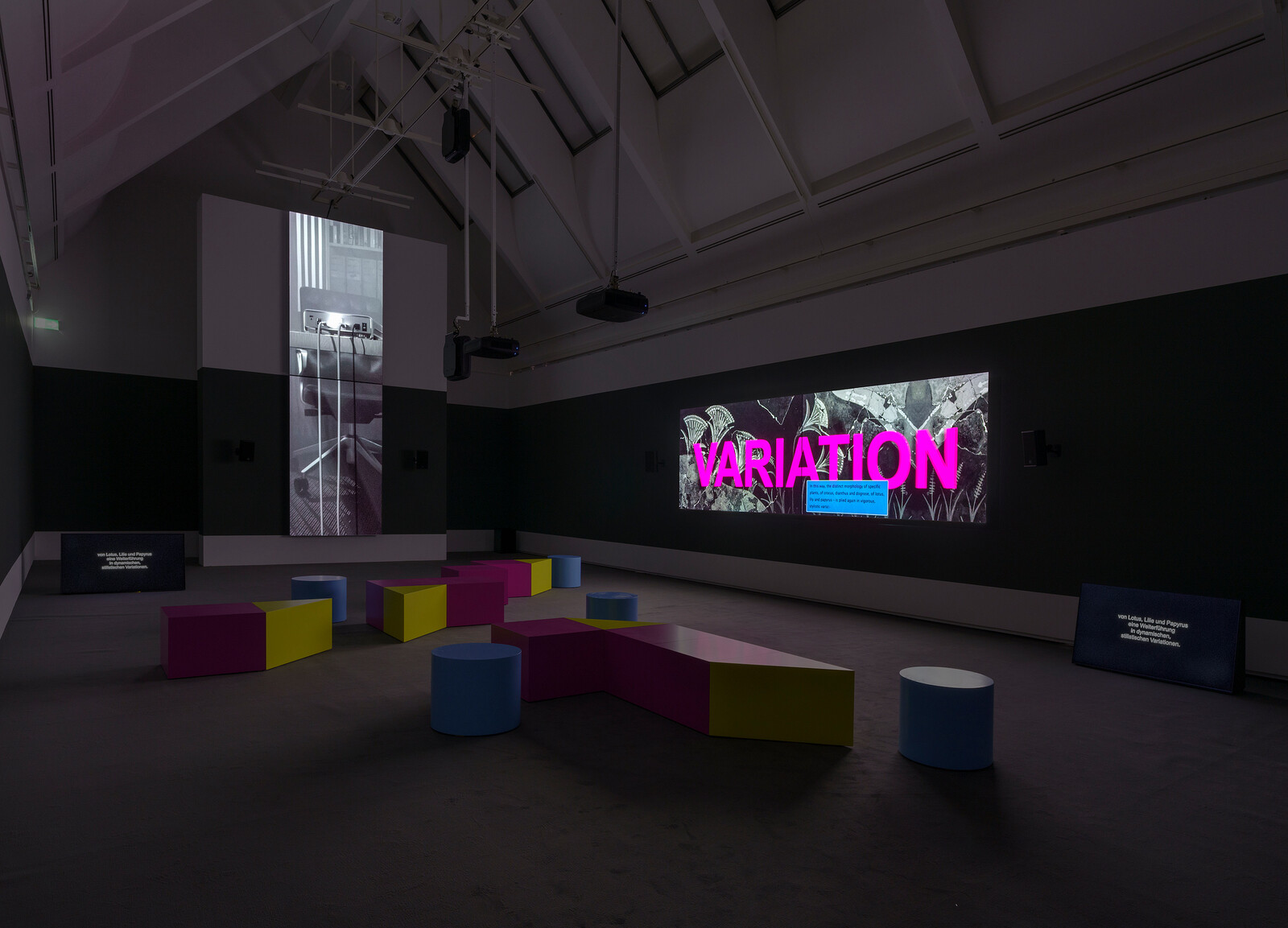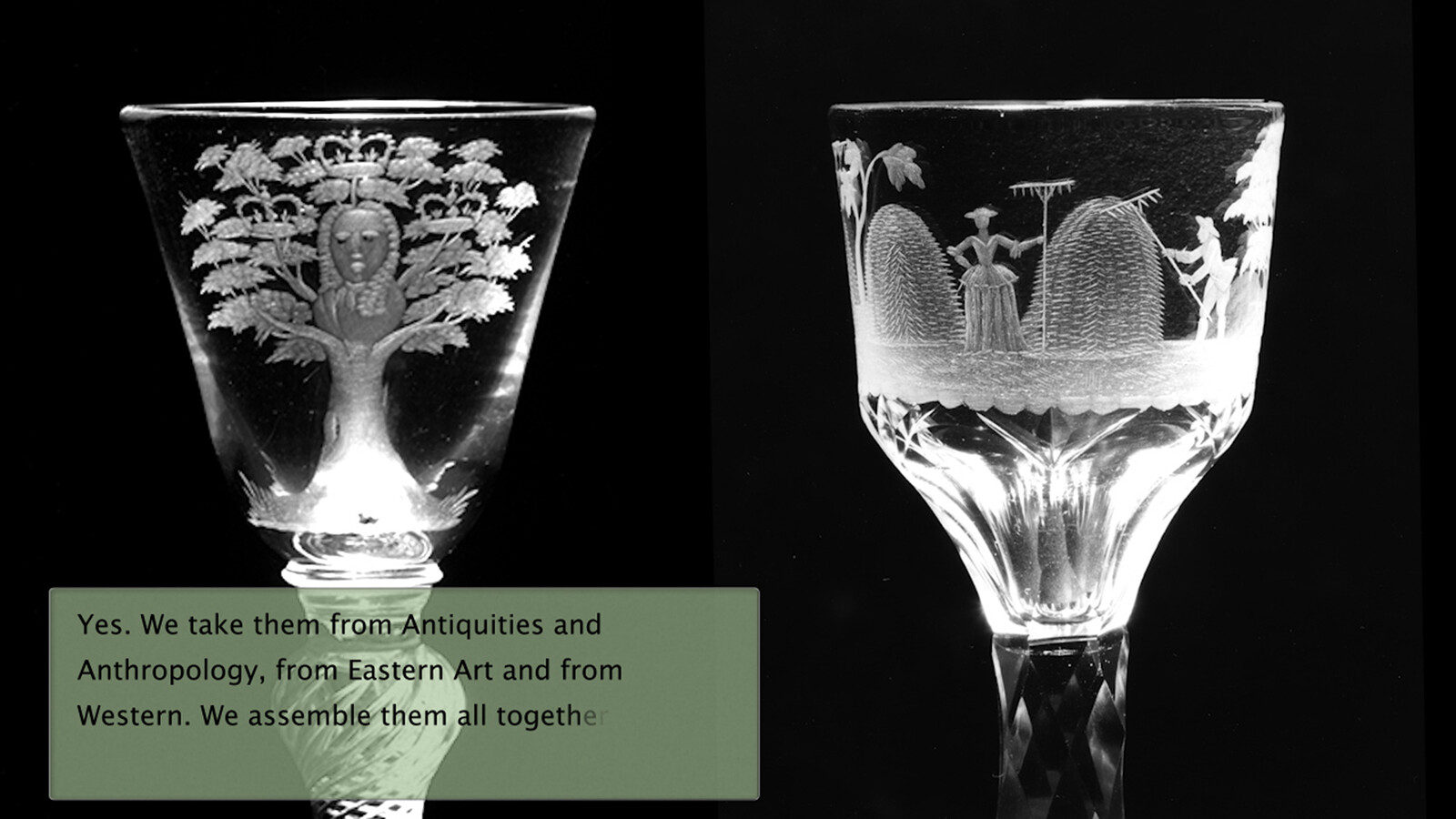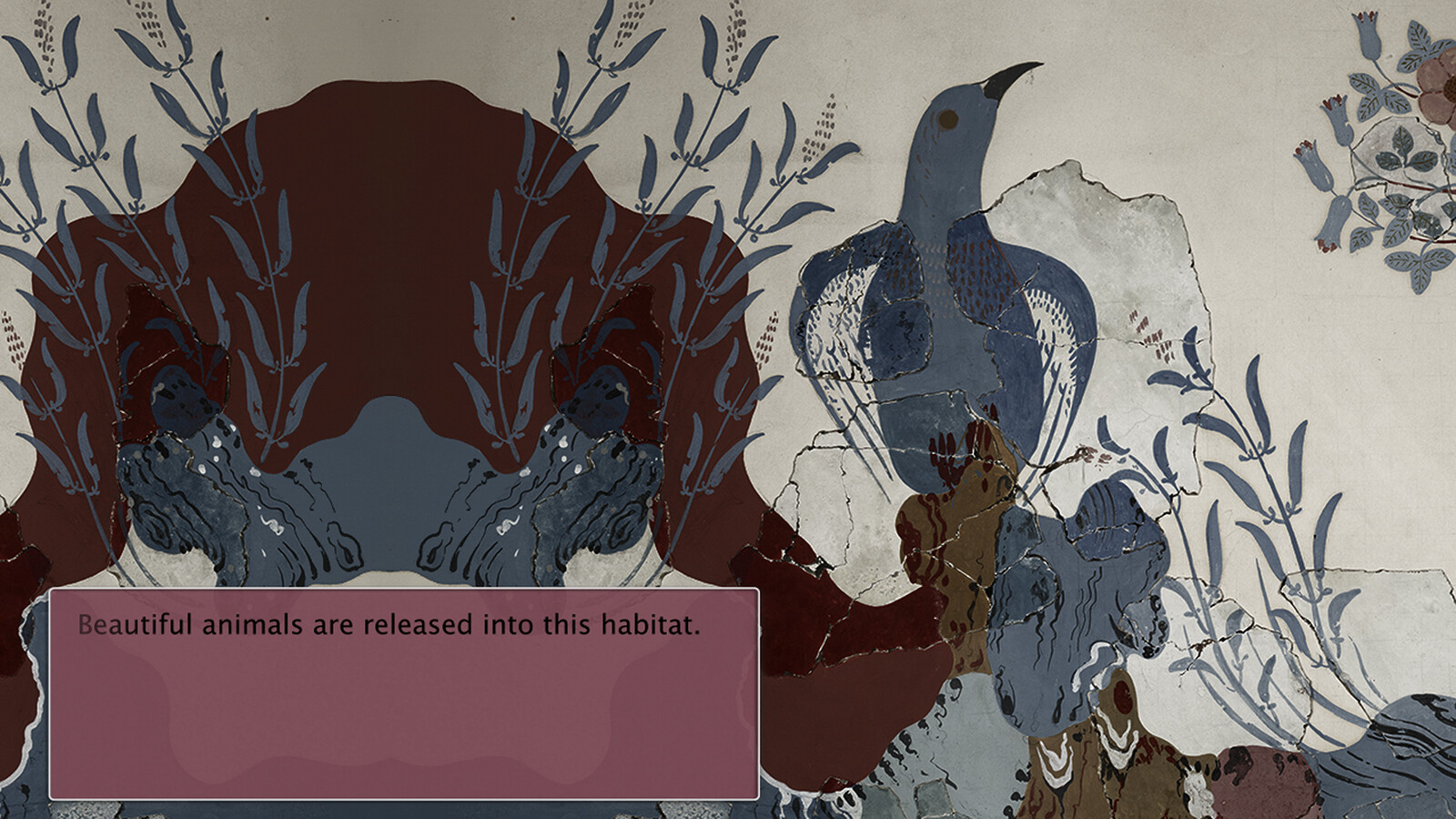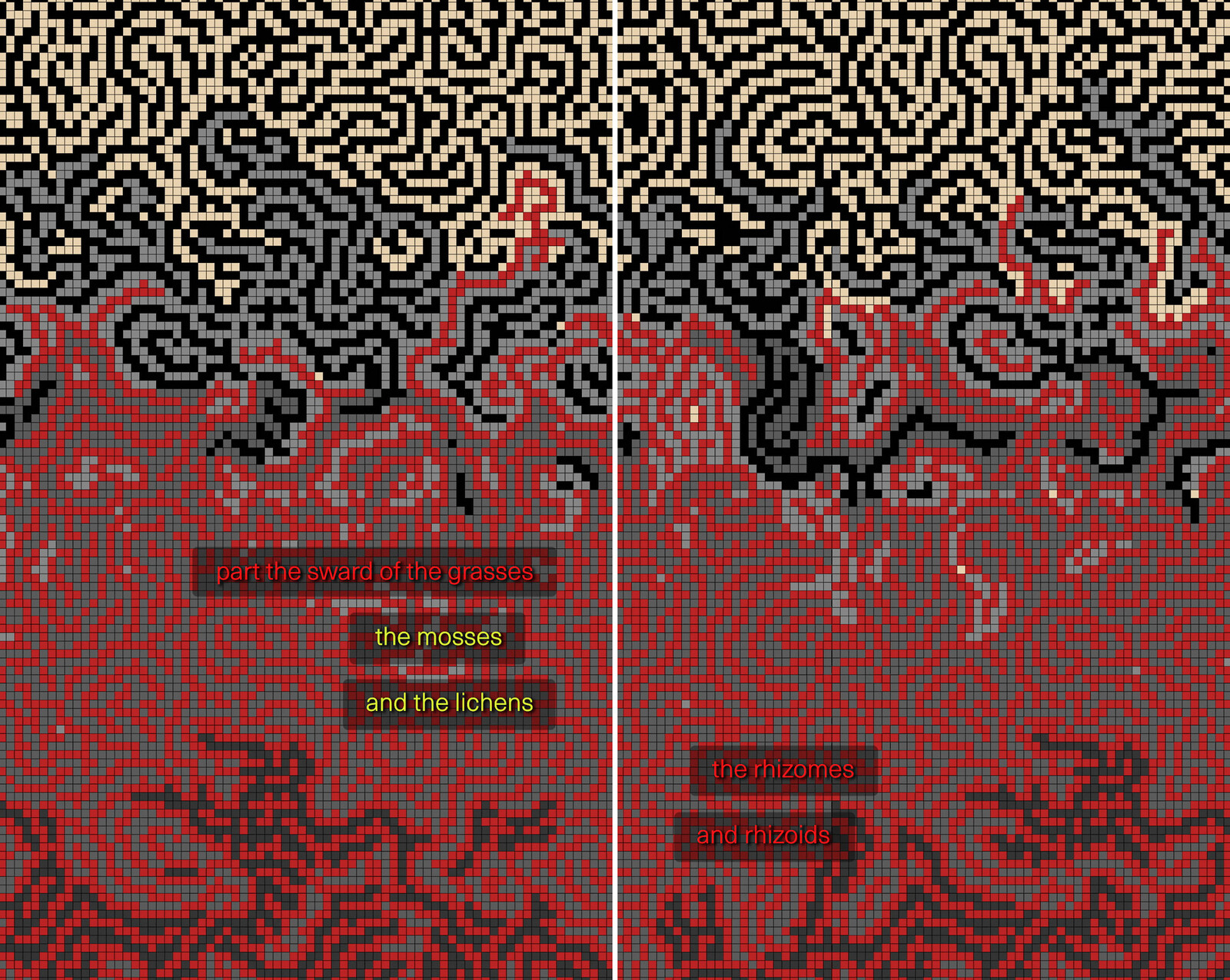A tremble, a silence, and a piercing clatter: “Sound of the Break” derives its name from a sequence in Elizabeth Price’s video installation A RESTORATION (2016), which displays what a voiceover calls “a great hectic gathering” of archival images of vessels from Oxford’s Pitt Rivers and Ashmolean museums. A disembodied choir argues that these objects are made to be broken, so that their echoes can resound. When a Boscobel Oak wineglass falls and breaks off-screen, the choir declares it “a small sacrifice” of which “the great rumble resonates.”
A RESTORATION brings together many of Price’s recurring motifs: choirs of synthetically generated voices; archives absent from the historic record; interwoven technological histories; architectural plans as conceptual metaphors; sardonic institutional critiques; and untold feminist cosmologies. It is one of four works in her solo exhibition at the Schirn Kunsthalle Frankfurt (the building, fittingly, is also home to a music school). Two dark spaces, each displaying two video works shown consecutively on loop, connect to a central viewing room in which four screens show new video lectures, made in 2020 during lockdown in London. Other works here include FELT TIP (2018), on how information technologies transformed the workplace; UNDERFOOT (2022), on the sonic materialism of Glasgow’s Mitchell Library; and NIGHT OF THE WORLD (2023), a speculative fiction that imagines 2897 luxury cars, sunken after a container ship accident, gaining sentience through their “intelligent vehicle control systems.”
Price’s work is at its most poignant when it gathers disparate sources of meaning to a single point of origin, often via visual or etymological analogies, such as when she notes that a “carrel,” a space surrounding a desk, shares a root with “carol,” the performance of religious song. FELT TIP shows a collection of neck ties from the 1970s and ’80s bearing the embroidered likeness of memory chips. A choir of generated women’s voices argues that these patterns archive their own means of production: Jacquard weaving was the first technology to use data storage on an industrial scale. The looms that produced such ties replaced the symbols of elite schools and clubs by the hardware favored by the upcoming managerial class, ushering in a new era of social reproduction under the guise of meritocracy. Provocative connections such as these point to speculative readings of haunted pasts and futures, positioning the quotidian as being imbued with enigmatic qualities.
In the four video lectures, Price addresses her artistic approach, themes, and methods, acknowledging the superabundance of research that goes into each. Prominent among the works discussed is the Turner Prize–winning THE WOOLWORTHS CHOIR OF 1979 (2012), not on display in this show but central to Price’s oeuvre; here, three of the videos are named A GOTHIC CHOIR, after two themes central to this now decade-old work. At their best, these videos evoke fascinating associations: gothic architectures are “bloody carcasses”; both the architectural meaning as well as the sonic meaning of “choir” are related to the form of the book. Stills, scans, biographical details from other artists’ life and work glide over the screens, crediting Price’s disparate influences: Eileen Agar, Eugène Viollet-le-Duc, Andrea Fraser, Hannah Höch, Barbara Kruger, John Ruskin.
These videos explicitly attempt to demystify their own making. Price discusses her use of video editing software Adobe Premiere, presenting its timeline as the “underside of an artwork.” All but one of the videos feature footage of this interface. Technologically aided characters become discernible through their own sonic tags, mouse clicks, and keyboard clatters. At points, those evocations are insightful, if highly conceptual: Price shows floorplans and cross-sections of London’s Hackney Council and Oxford’s Bodleian Libraries, comparing their image planes to the video-editing interface in which she arranges the stills. “Sound of the Break” marks the first time that Price has revealed these particular methodologies and tools, with which she “shapes the imaginable elements of an artwork.” Potentially infinite iterations of a given work could be drawn from the same rich archive of research.
Yet the central works in this exhibition already integrate meta, self-aware commentary: they proclaim to work “in satire & with love” or to present a “sardonic memory.” Interrogating each element of this process explodes the black box, inhibiting unexpected, speculative, and affective moments that might otherwise have been experienced were the approach not so didactic. Price’s historical excavations tend to avoid directly addressing contemporary discourse around their subjects. Of A RESTORATION, the artist argues that drawing from the Pitt Rivers and Ashmolean archives “retains complexity,” but does not acknowledge the controversies around their ownership of looted objects, racist ethnographic displays, and ongoing repatriation efforts. In this, the videos seem painfully self-aware of the limitations of institutional critique, mirroring the isolation of the Covid-19 era during which these new works were produced. The goblet is sacrificed, yet the catharsis it brings is muffled by the carpeted gallery.






